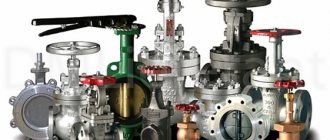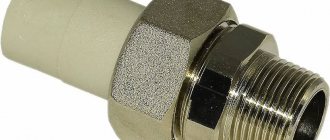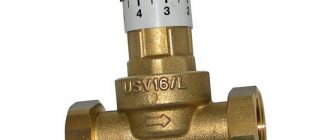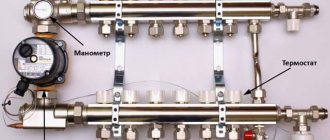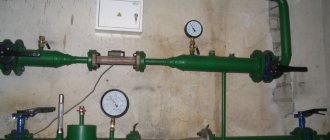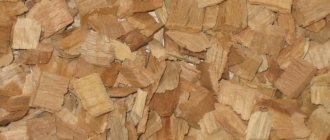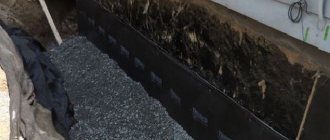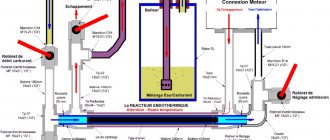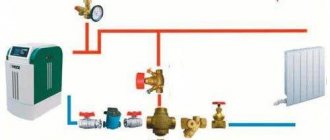Details 01/13/2021
Shut-off valves are a type of pipeline fittings, the main purpose of which is to shut off the working flow of any medium in engineering systems
with the required degree of tightness.
After all, users often need to stop the supply of any liquid, gas or any other medium.
This need often arises during accidents, when it is necessary to carry out repair work, in the process of connecting new branches to the network, as well as in many other similar situations. This type of fittings has found its wide application in such important industries as industrial, construction, and also in the domestic sphere.
Surely many have encountered shut-off valves at home in systems: individual heating, water supply, sewerage, etc. buy shut-off valves on the page in the Armtrading online store on very favorable terms, delivery of which to the address you specified will be carried out in the shortest possible time.
Types of shut-off valves
Depending on the functions that are provided in a particular type of valve, in addition to the main locking function, it is all divided into the following types:
- Shut-off and regulating. This type of fittings makes it possible to change the volume of moving flow by only partially blocking the passage.
- Check valve, which eliminates the risk of flow passing in the opposite direction.
- Non-return-closing, which provides the possibility of forced closing and restriction of movement of the shutter element.
Types of shut-off valves by area of use. Currently, modern manufacturers of shut-off valves offer their consumers products made from materials such as cast iron, steel, copper, plastic, etc. Depending on the area in which a particular product is intended to be used, it is all divided into following categories:
- Industrial, necessary for the correct stable operation of heating, water supply and gas systems.
- General industrial, which is widely used under high pressure conditions, as well as at low and high temperature conditions. Also, this type of fittings has found wide application for installation on pipelines through which aggressive, toxic or radioactive media move. Moreover, this type of fittings is also highly resistant to corrosion and can have a heating function.
- Special, the production of which is carried out exclusively on a special order, in accordance with the technical parameters specified by the customer.
- Marine, which is intended for use on river and sea vessels. Such products must have a high degree of reliability, a certain weight and immunity to vibration.
- Plumbing, which can be found in almost every living space. In its absence, neither plumbing, nor household appliances, nor the individual heating system will function properly. Control of such products is most often carried out exclusively manually, with the exception of gas safety valves and pressure regulators.
There is also another group of shut-off valves - this is unique. Its production is carried out, as a rule, exclusively for experimental industrial installations.
Characteristics and purpose
Shut-off and control valves are devices that are designed to shut off, change and control the parameters of the internal environment of a pipeline. Such fittings are installed in water supply, heating, sewerage and gas supply systems.
The devices are used at all levels: from large highways to individual pipelines located inside a house or apartment.
Each system has several parameters that can be adjusted. These include volume and flow rate, pressure, temperature. Shut-off and control valves are used to allow these parameters to be changed without shutting down the system.
The purpose of such parts is to redirect the flow of liquid or gas to other branches of the system. To do this, the device is installed in a place where there are branches. As necessary, some branches are closed and others are opened.
Other types of shut-off and control valves are capable of reducing the pressure inside the system if it increases or decreases the temperature. Some of them work automatically, according to the laws of physics.
For example, a release valve allows gas to flow only when the pressure inside the system increases. This allows you to keep this parameter at the same level. Other devices are manually adjusted, for example using valves.
The main characteristic of shut-off and control valves is its throughput. For optimal application, relative, actual, maximum, initial and conditional throughputs are calculated.
Note! Throughput is a physical quantity that reflects the volume of a medium of constant density passing per unit time through a cross-section of a pipe at a pressure of 1 bar. Simply put, it is the amount of liquid or gas that can pass through a pipe in a certain period of time.
In addition, shut-off and control valves are characterized by the range and zone of regulation, as well as the setting of the regulator. These parameters reflect the differences between the maximum and minimum throughput data: the range of values that can be adjusted.
We recommend that you read: Vacuum valve for sewage systems
Another important characteristic is relative leakage. It reflects the theoretical ability of parts to deviate from the specified tightness parameters. Simply put, this is a quantitative reflection of the leakage of the product.
Types of shut-off valves by type of connection to the system
The method of connection is one of the main important parameters when designing absolutely any pipeline fittings. The quality of operation of the entire system will directly depend on the correct choice of this feature of the product. The most common varieties are:
- Flange type of connection, which differs in the shape of the flanges (round, square or triangular). They are tightened on the pipeline using bolts or studs, which have special holes for this purpose. Reliable clamping of products is carried out using nuts. Flanges are usually made from cast iron or steel.
- Threaded connection designed for connection to large diameter pipelines. At one end of this type of fitting there is a hexagon, the presence of which makes it possible to use an adjustable wrench for the purpose of tightening it more tightly.
- A fitting connection, which is intended for connecting fittings with a small diameter. The end of this type has an external thread, which is pressed using a union nut. This type of connection allows you to install various measuring instruments into the main line.
- A welded joint currently widely used on pipelines that transport media hazardous to health. In this case, it is necessary to ensure a completely sealed connection. It is worth understanding that the weld in this case cannot be weaker than the pipe wall. This type of connection is made in two ways: butt or socket, when the seam is located on the outside of the pipe.
There is also another type - this is a fitting for a toilet flush barrel. It is she who is responsible for pouring a certain amount of water into the tank and blocking it after it is completely filled.
Types of shut-off valves according to the method of flow regulation. The flow of the medium can be adjusted in different ways. Depending on this, shut-off valves are divided into the following types:
- Cranes;
- Shut-off valves;
- Electric drives;
- Dampers
- Gates;
- Valves;
- Valves.
At the same time, all dimensions of any type of shut-off valves must comply with all standards and requirements of GOST. Their compliance is confirmed by the presence of special accompanying markings, which the manufacturer leaves on the product body. All information about the manufacturer, the material used in the manufacture of the part and the working dimensions of the element should be present here.
Types of pipeline fittings
Shut-off pipeline valves, the most common type of fittings, have several design options. Pipe shut-off valves are divided into the following types:
A valve is a pipe shut-off valve in which the shut-off structure moves parallel to the movement of the circulating flow. There are two types of valves - wedge and parallel. In wedge valves, the flow is blocked by a gate in which the seals are placed at an angle to each other. The shutter, depending on the design, can be rigid, elastic, or made in the form of two alloy steel disks.
Gate valves are divided into types according to the type of gate. Designs with a rotating (not retractable) spindle are used in pipelines transporting corrosively neutral media, in which long-term exposure of the spindle does not provoke destruction of the material (oil, water); in the chemical industry, the installation of plugs with a retractable spindle is practiced. Powerful steel valves can withstand flow pressures up to 25 mPa .
A valve is a fitting that shuts off the flow due to the reciprocating movement of the valve inside the pipeline. The valve, in most cases, has a flat valve, the cross-section of which corresponds to the internal diameter of the pipe. The valves are manufactured with a flange connection, providing a high level of tightness.
Depending on the material, the valve can be cast iron, steel (stainless steel or alloy steel) or bronze. There are linear, angle and mixing valves; the latter are installed when it is necessary to maintain the required temperature, concentration or density of the transported medium.
A valve is a fitting that shuts off a pipeline by rotating around its own axis of the locking disk. Dampers are structurally similar to valves, however, they have significantly smaller dimensions and a wider scope of use - these fittings, in addition to industry, are in demand in heat and water supply, and sewerage systems.
The tap is the most common type of shut-off and control valves in domestic use. The locking part in the faucet is located in the direction of the flow of the circulating medium; it can be made in the form of a spherical or conical element.
Shut-off valves can be installed on pipelines transporting liquid or gaseous media. The advantages of this fitting include compact dimensions, simplicity and maintainability of the design, and minimal activation time.
Depending on the type of design, the valves can be straight-through, corner or mixing (three-way), in which two inlet pipes are connected to the central outlet, which allows mixing several working media with each other.
Read also: Makita wood milling machine price
The tap is the optimal choice of shut-off and control valves not only for steel, but also for polypropylene pipelines.
Shut-off valves are an integral element of flow control systems in pipeline systems; they are an important component of the fuel and energy complex.
Extraction, preparation and transportation of petroleum products is impossible without pipe products with control mechanisms installed on them.
Valves
This product is a special device with a control element, the movement of which is carried out at right angles relative to the flow of the working medium. Valves must withstand both high temperature and high pressure. The use of valves is widespread in large highways through which various non-aggressive compounds are transported. The locking mechanism here can be a wedge, a sheet or a disk.
Areas of use of valves. This type of shut-off valve is widely used in urban utilities, in the oil and gas industry, in the shipbuilding industry, and even in the food and construction industries. Valves are divided not only by the material used in the manufacture of their body, but also by criteria such as:
- Type of spindle (with retractable and non-retractable spindle);
- The material of the valve sealing surfaces (rubber-coated or steel with stainless steel overlay);
- Drive type;
- According to the method of connection to the pipeline.
According to the type of drive, valves can be manually controlled, with a mechanical gearbox, or with an electric motor. Advantages of using valves. The main advantages of gate valves over any other types of shut-off valves are the following features:
- Compact dimensions;
- Relatively low resistance;
- Possibility of manufacturing from cast iron, steel or any non-ferrous types of metal;
- A simple way to control (manually) using an electric or hydraulic drive.
All valves are divided into full bore and truncated. A distinctive feature of full bore valves is the same diameter of the seat and pipeline. In truncated ones, the cross-section of the pipe is larger than the size of the saddle. Installation of such fittings is carried out on the main line, where the connection diameter is more than 50 mm. A sharp increase in flow pressure here can cause water hammer. From us you can always high quality valves
In order not to make a mistake with your choice, before purchasing, it is important to determine in advance the tightness class of the valve. Valves can have different tightness classes from A to G. Where class A is considered the highest, in which leaks in the valve are completely eliminated. In the case where the installation of the valve is not planned in the near future after purchase, before storing the product, check the tightness of the valve closure.
Types of control valves
- Photo-separation – used when it is necessary to separate working media that are in different states.
- Condensation – used to eliminate condensation, limited passage or blocking of superheated steam flows.
- Protective shut-off and control valves are aimed at automatically protecting pipelines and equipment from unforeseen or unacceptable changes in the functioning of the pipeline system.
- Control room – designed to control the flow of working media into measuring and control devices.
- Mixing and distribution - distributes separate flows of working media in various directions or is directly involved when it is necessary to mix them.
- Throttling - used when it is necessary to reduce the pressure of working media in systems that operate under conditions of significant sudden pressure drops.
- Non-return valve is a check valve in which forced opening, restriction or closing of the stroke is possible.
Cranes
All currently existing valves come in two types: ball and plug. The design of these products is quite simple. They consist of a housing and a locking device. The use of ball valves is widespread in everyday life, while plug valves are most often installed on highways through which media such as oil, gas, water, etc. pass. The shut-off element in these types of valves is a ball, while in plug valves it is cork-shaped cone.
Also, all types of cranes are divided into different types based on performance. They come in full bore, partial bore and standard. In this case, the flow is controlled using a flywheel or an electric drive. There are also models with remote control.
Ball valves have a locking element in their design that resembles a chrome-plated ball with a small hole along one of the axes. This element is located between the sealing rings in the very central part of the body. The opening and closing processes in such fittings are carried out due to the displacement of the ball while turning the lever. If the hole is located vertically with respect to the longitudinal line of the pipe, then liquid is supplied. If it is located perpendicularly, then access to the flow will be blocked. Due to the fact that there are no rubbing elements in the fittings, fluid leaks will be minimal.
The most popular are ball valves made of brass or steel. There are also models on sale made of plastic, which is highly resistant to aggressive chemicals. However, it is worth noting that the tightness of such products is not high, and they are highly sensitive to solid inclusions and elevated temperatures. Such taps are excellent for installation in cold and hot water supply systems, the temperature of which does not exceed 65⁰.
We offer to buy ball valves in a wide range with prompt delivery to absolutely any region of Russia.
Gates
A butterfly valve is one of the types of shut-off valves. It is a design in which the locking element is made in the form of a disk. It can rotate around an axis that is perpendicular to the flow of the working medium. The main distinctive features of butterfly valves are the following nuances:
- The ability to perform functions such as control and shut-off, as well as emergency operation and reset of the working environment.
- Thanks to the specific location of the locking disk, the cross-section of the passage channel is significantly reduced, as well as the provision of hydraulic resistance to the flow.
- A step type of regulation, which is explained by the mandatory retention of the damper in a certain position at the pressure of the working flow.
- The product is light in weight and has a short longitudinal length, which greatly simplifies the work of installing the fittings.
Depending on the method of connection to the pipeline, all butterfly valves are divided into: flanged, wafer, welded, threaded and coupling.
the flanged body there are collar and solid disks with the presence of special holes intended for attachment to the pipeline section. The tightening pins are passed through these holes.
The design of wafer butterfly valves has a protruding rubber seal located around the perimeter of the passage channel. During the pinning process, the locking element is installed using clamping force and a reliable seal.
There is also a welding , which is welded against the pipeline. The advantage of this type is the absence of any complex requirements for the spatial arrangement of joined parts.
The threaded type of valves is most often made of brass, and has a thread on the body that matches the thread on the pipeline. Such varieties are most often used for installation in domestic heating systems in order to regulate the flow power passing into the radiators.
In coupling-type valves, the connecting pipes have a perfectly smooth polished surface, the shape of which is similar to a cut cone. Installation of such products is carried out together with a sealing seal.
Types of gates by type of drive
- The handle is a one-handed console that rotates 90 degrees using a rotational force.
- A gearbox that operates on the principle of a system of transmission gears with the presence of a steering wheel.
- The electric drive is quarter-turn, the installation of which is carried out for the purpose of automation of control.
- An electric drive with a gearbox, which is installed on products with a large diameter.
- Hydraulic drive, the presence of which significantly reduces the forces applied to the turning mechanism.
- Pneumatic drive, controlled by compressed air.
By looking at the catalog of the Armtrading online store, you can always buy butterfly valves with professional assistance in choosing the most suitable part for you.
Classification of pipe fittings
According to the provisions of GOST, pipe fittings are divided into groups based on the following factors:
The main classification parameter is the functional purpose, according to it the following types of pipeline fittings are distinguished:
- Shut-off valves are structures designed to completely shut off the flow of medium circulating through a pipeline. Shut-off products, in turn, are divided into drain valves (used to remove the transported medium from the pipeline) and control valves (blocks the flow and supplies the working medium to instrumentation).
- Control valves - used to regulate the throughput of a pipeline. It is divided into throttle - reduces the operating pressure in the pipeline by increasing the hydraulic flow resistance, and shut-off and control - combines the functions of two types of fittings, the most commonly used pipe fittings today.
- Protective (cut-off) valves - installation of shut-off valves is carried out to protect the equipment connected to the pipeline and the pipeline itself in emergency situations. The fittings block and disconnect the failed part of the pipeline from the circulation ring, which makes it possible to carry out the required repair work. A type of protective valve is a non-return valve, which prevents the possibility of reverse flow of the circulating medium.
- Safety valves are structures that automatically relieve excess pressure in the system, which protects equipment and the pipeline from overloads.
- Distribution fittings - installation is carried out in two adjacent pipelines if it is necessary to combine and mix their flows.
- Connecting fittings are structures used for joining pipelines or routing a main line into several channels. This group includes all kinds of tees, bends, crosses, etc. The material of manufacture of the connecting fittings corresponds to the material of the pipeline (production of both steel and polypropylene and polymer products has been established).
Read also: Device for sharpening Bosch drills
Types of pipeline fittings
Depending on the scope of application, all pipeline fittings are divided into industrial and household. Household fittings are used for gas pipelines, water pipes and heating pipes. The class of industrial fittings, in turn, is divided into the following groups:
A separate subgroup includes ship fittings used on military and civilian ships, which have an increased reliability class.
According to the control method, pipeline fittings are divided into two types - automatic and controlled. Controlled valves can have several types of drives:
- manual drive;
- mechanical drive (electric, pneumatic, hydraulic or electromagnetic type);
- remote drive - a control structure that is remote from the valve and connected to it through a transmission (shaft, cable, gears or bearings)
Depending on the method of connection to the pipeline, pipe shut-off valves are:
For pipelines made from polymer pipes (polypropylene, polyethylene or metal-plastic), fitting-type structures are most often used - this is the most common fittings in domestic use, while industrial fittings are usually flanged or coupling.
Ball valve design diagram
The last classification factor is the principle of sealing reinforcement , according to which structures are divided into:
- stuffing box - at the junction of the fittings and the end part of the pipeline, seals made of asbestos, graphite, fluoroplastic or rubber O-rings are placed;
- bellows - instead of elastic materials, corrugated metal bellows are used for sealing;
- membrane - structures in which the membrane simultaneously performs a sealing and locking function;
- hose - a compressible rubber hose is used as a sealing material.
Marking of pipeline fittings
Marking of pipeline fittings is carried out in accordance with the provisions of GOST No. 4666-75 “Pipeline fittings”. The marking consists of a series of alternating letters and numbers , example - 30с941нж2, where:
- 30 – type of fittings (valve);
- c – material of manufacture (carbon steel);
- 9 – drive type (electric);
- 41 – model number;
- nzh – type of sealing material (stainless steel bellows seal);
- 2 – execution option.
You can find a breakdown of each nomenclature component of the marking in the tables of TsKBA (Central Design Bureau of Valve Engineering).
Operating principle of pipeline fittings (video)
Shut-off valves
This type of shut-off valve has found wide application in many pipelines and is used to regulate the flow of the working medium. The principle of operation of the shutter valve is that when a special steering wheel moves, the spindle transmits rotation to the shutter. After which the shutter makes translational movements, thereby blocking the hole and creating a block for the passage of the working flow. The main advantages of this type of shut-off valves include the following features:
- Ability to withstand pressure up to 250MPa.
- Easily withstands working environment temperatures up to 600 degrees.
- Possibility of use even in both homogeneous and aggressive environments.
- Ease and convenience during installation work, as well as no need to dismantle the system during repair work.
- High resistance to negative external influences.
Types of shut-off valves. Depending on the mounting method, shut-off valves are divided into the following types:
- Coupling, which is fastened together with the pipeline using a threaded connection. Installation of this type of valves is possible on pipes with a diameter of 150 mm. To complete the installation of this type of fittings, you only need an adjustable wrench and a little free time.
- Flange, which is secured using nuts and bolts. This method is intended for fittings that are installed on pipelines with a pressure of no more than 20 MPa.
Also, all shut-off valves are qualified according to the sealing method:
- Omental. In this case, the sealing of the product is ensured by a stuffing box having a special sealing packing.
- Bellows. Here, tightness is ensured by the presence of a special corrugated tube with a valve stem inside. The bellows connection is made by welding at the top of the structure, as well as by means of a shutter located slightly below the flow paths from the valve.
Depending on the type of valve structure, they come in the following varieties:
- Angular, the design of which is intended for connecting pipes located perpendicular to each other.
- Pass-throughs, the location of which is possible both on a vertical and horizontal pipeline unit.
- Direct-flow, having the form of a spherical design with existing nozzles built into the body of the product.
- Needle, which is a design with a conical shutter. This type is installed in valves with a diameter of no more than 25 mm.
It is worth noting that the operation of locking devices is possible in a fully automatic mode, without the application of physical force. The design of such fittings has a special electromagnetic device with a shutter attached to it, in the form of a disk or piston. During the process of current transmission, the gate moves and access to the movement of the working flow opens. By looking at the catalog of our online store, everyone can easily choose and buy gate valves in a wide range at a very affordable cost.
Electric drives
Automation of pipeline system management processes is constantly being improved. Today, in order to reduce the amount of manual labor, electric drives for shut-off valves are widely used. Thanks to their operation, quick and convenient adjustment of the volume and pressure of the working flow moving through pipelines is ensured. In addition, it is also possible to monitor the condition of pipeline fittings. The operation of such electric drives makes it possible to do without constant human presence, significantly reducing the economic costs of servicing systems located in remote locations.
An electric drive is a complex electromechanical unit. The design of the device consists of an electrical power part, a rotation conversion system, an electronic unit and a set of sensors with switches. The presence of sensors allows you to receive a signal when turning the engine on and off.
The operating principle of such electric drives is to transfer mechanical forces from an electric motor to the gate itself. Thanks to the presence of an electronic control unit in the design, it is possible to set absolutely any valve position. In addition, it monitors the value of power consumption. In addition, due to the electronic control of the electric drive, it is possible to maintain the specified parameters in the system even in the case of a variable incoming load and unstable operating modes.
Types of electric drives
Depending on the type of control force transmission, all electric drives are divided into the following types:
- Translational motion drives, the operation of which allows the pipeline cross-section to be closed using the rod method.
- Rotary actuators that set the valve in motion by converting the rotational energy of the motor shaft through a gearbox.
All rotary drives are divided into:
- Part-turn ones, which provide valve control for 1 revolution of the engine shaft.
- Multi-turn, the operating principle of which is several revolutions of the drive shaft. This type has found wide application for various types of dampers and control valves, in which high precision is required, as well as smooth closure of the pipe section.
Today the following types of shut-off valves can be equipped with electric actuators:
- Valves. For them, multi-turn electric drives are used, the power of which ranges from 0.18 to 1.5 kW.
- Ball Valves. Quarter- and single-turn types of electric drives are used for them.
- Shutters. As a rule, they are equipped with one and quarter-turn electric drives.
We value the trust of every customer, therefore we offer for sale products purchased from reliable, time-tested suppliers. So, in our online store, you can always buy electric drives from well-known manufacturers in a wide range with an impressive warranty period.
Technological process of operation of shut-off and control valves
| Author | Share | Rate |
| Victor Samolin |
Interesting on the topic:
Features and areas of application of shut-off valves
Shut-off and drainage valves for water supply systems
Description and characteristics of bellows liner
Comments on this article
Sefandnaf Good afternoon
What brand of ball valves can you recommend? Everyone gives different advice, it’s hard to decide. 01/31/2016 at 02:11
Accessories for shut-off valves
If you are faced with malfunctions of shut-off valves, do not rush into an expensive replacement of the entire system completely. Often, most problems that arise are easily solved by replacing a certain spare part, which may fail over time. In the Armtrading online store, you can always buy components for shut-off valves of the following types:
- Cuffs, which are available in both external and internal types. The external type is necessary for connecting socketless pipes. Internal ones are designed for reliable connection of socket pipes, as well as for joining plastic and cast iron products.
- Seals that can be made of high-quality rubber, paronite or metal. When choosing them, it is worth taking into account the aggressiveness of the working flow, the diameter of the pipeline, the material of the pipes, as well as the method of fastening.
- A compensator stroke limiter, which makes it possible to significantly increase the service life of the fittings, ensuring ideal sealing of the line. When choosing them, you should take into account the length of the required limiter, the material of the rod base, as well as the composition of the package.
And also, in addition to all of the above, in our sale you can always find a wide selection of deflectors, gearboxes, stainless steel disks and other components intended for the correct installation of shut-off valves. The catalog presented to your attention is regularly updated with new products that are easy and convenient to install on any pipeline.
Buy shut-off valves with delivery throughout Russia
If you still don’t know or are in doubt about choosing a place where to order shut-off valves and components for them, then we are always glad to see each of you among the buyers of the Armtrading online store. Our team consists of highly qualified employees with serious experience in this field. They are always ready to give comprehensive answers to all your questions. In addition, among the most significant advantages of joint cooperation with us, it is worth highlighting:
- Wide range of choice. The catalog of shut-off valves presented to your attention is regularly updated with new products, among which you will undoubtedly be able to find exactly what you need.
- Providing an impressive warranty period for all products presented. We are confident in the high quality of the products we offer, so we are always ready to provide an official guarantee for its use.
- Comparatively low prices, which will certainly pleasantly surprise everyone with their availability.
- Assistance in organizing prompt delivery of your chosen goods to absolutely any region of Russia. And you can always pick up your order yourself from the sales office completely free of charge.
- A convenient interface of the site with the division of goods into separate categories, making purchases and payments convenient for everyone, without causing any difficulties even for an inexperienced PC user.
- Convenient form of payment. You can pay for your purchase in cash or by card of any bank.
We always pay special attention to the selection of product suppliers, carefully checking all quality certificates for each product. For many years now we have been cooperating with reliable suppliers of shut-off valves. This gives us the opportunity to set competitive prices without compromising the quality of products.
We are always ready to cooperate both on a one-time and long-term basis, providing the most favorable conditions for the purchase of shut-off valves in absolutely any volume.
